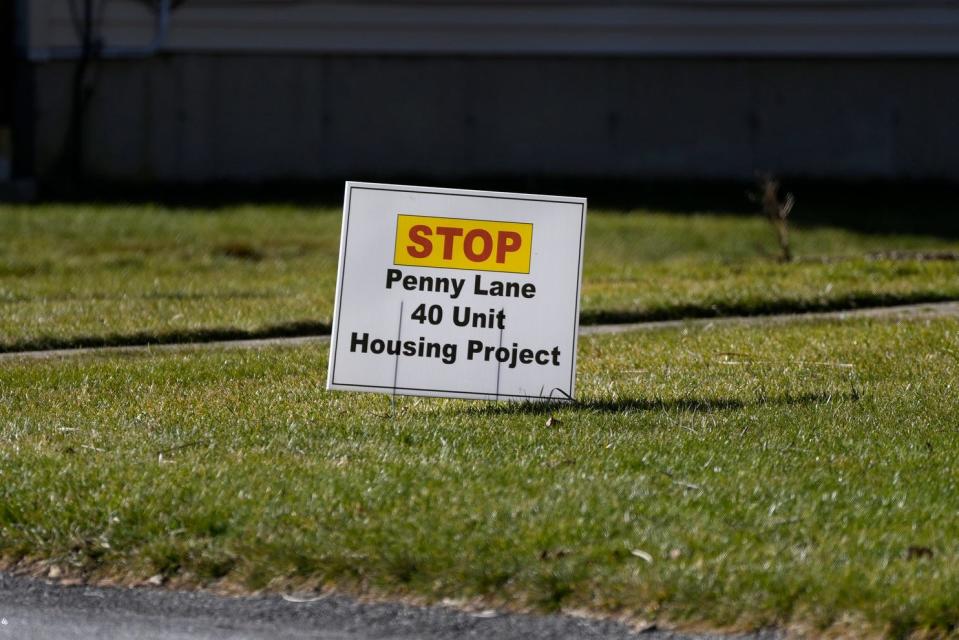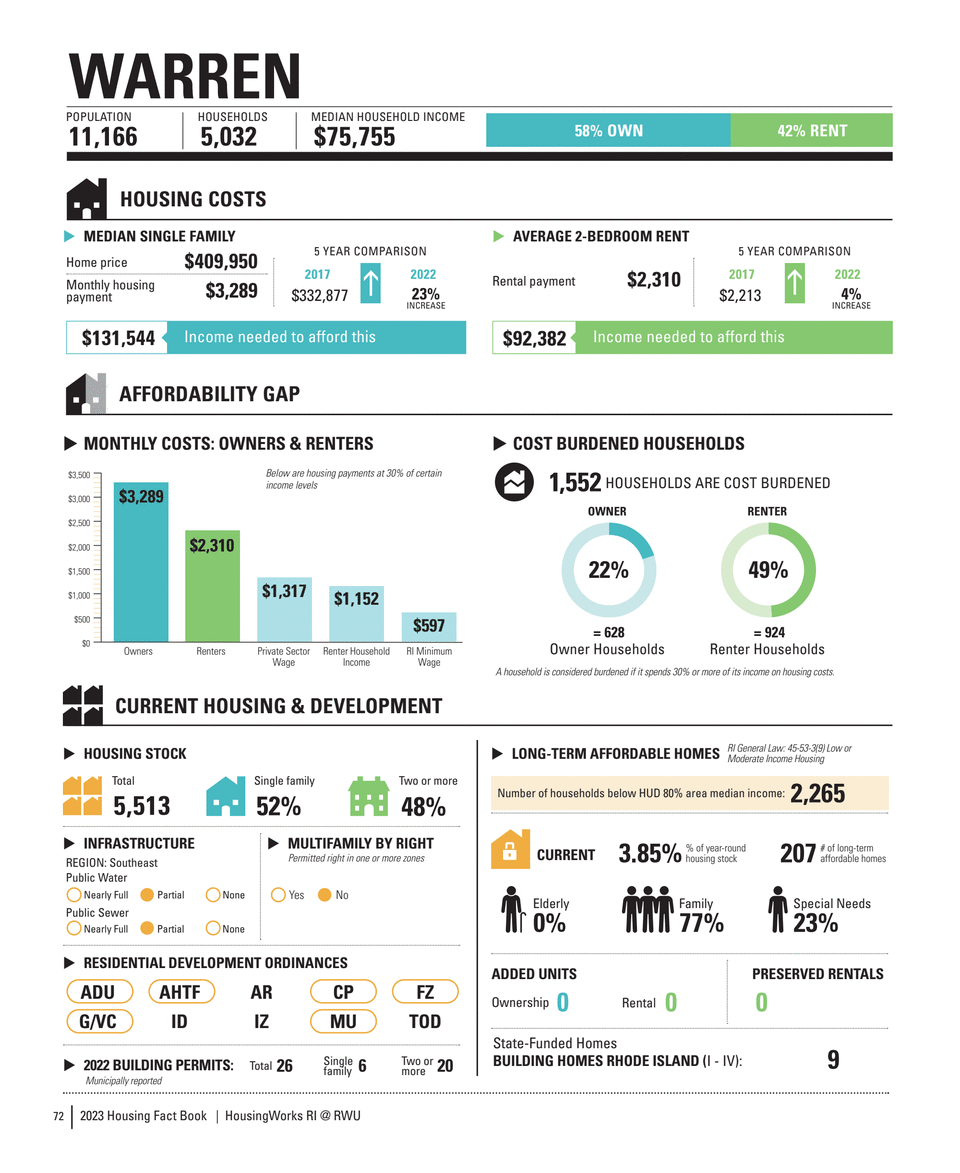After nearly being killed, Warren's Penny Lane affordable housing project back on track.
WARREN – The Warren Planning Board reversed its decision Monday night to cut the number of units in an income-restricted housing project nearly in half after realizing that the move was probably illegal under the state's new housing law.
In a meeting that lasted just under eight minutes, the Planning Board unanimously reversed the density-reducing condition placed on the project that reduced the number of proposed units from 40 down to 25.
With the reversal, the project is primed to move forward, assuming it gets funded through RI Housing, the quasi-state agency that doles out major housing funding.
"We think if we're awarded the funds, we will build the 40 units on the site," said project consultant Frank Spinella.
The Penny Lane project is a proposed 40-unit income-restricted, rent-controlled development on 4.5 acres at 581 Child St. in Warren. It is being developed by the East Bay Community Development Corporation.
Changes to state housing law last year allowed entirely income-restricted housing projects to go up to 12 units per acre, regardless of local zoning regulations. Zoning regulations in most Rhode Island municipalities can ban multi-family developments and create sprawl by requiring new houses go on larger lots.

What is the Penny Lane housing project timeline?
Now that the project has master plan approval without being reduced in density, the East Bay Development Corporation is waiting to see if it will receive funding this round from RI Housing.
While funding for the project comes from more than five sources, the vast majority is from RI Housing. The board is likely to vote on projects receiving funding and tax credits at either the May or June board meetings.
"We're hoping to get it this round and then be under construction next spring," Spinella said.
More: Rhode Island's housing crisis is at a breaking point. How did we get here?
If they do not receive the funding, they will reapply and the project will be pushed back a year, to 2026, he said.
The project has been in the works for three years.
Penny Lane has faced resistance from residents
In Warren, 3.8% of the housing stock is income-restricted, while the state has a mandate of 10%. While only a few homeowning households are "housing-burdened," or paying more than 30% of income on mortgage or rent and utilities, 49% of renters are housing-burdened, according to the 2023 Housing Fact Book.
Multi-family units in Warren, including duplexes, make up 48% of the housing stock but are not allowed by right in the town, although the Fact Book does not specify under what conditions they are legal. Of the residents, 58% own and 42% rent, according to the Fact Book.
During the Planning Board meeting where the board voted to reduce the project density from 40 to 25 units, resident Joan Hunt said developing or changing the neighborhood would be "just wrong," implying that the development would make Warren an urban community.
More: Warren cut the density of a proposed housing project by 38%. Now the town wants to undo that
"The ruse of affordable housing ... is just a lie; no one aspires to get an apartment unless you still live in the Soviet Union," resident Rhett Nanson said.
Spinella said the no-housing sentiment is incredibly strong; he claimed a worker drilling test holes was threatened by a neighbor wielding a shotgun.
During that density-reducing meeting, he was interrupted by a man who said the development would "bring trash to the neighborhood."
Page 74 of 2023 Housing Fact Book - HousingWorksRI

Contributed to DocumentCloud by Wheeler Cowperthwaite (The Providence Journal) • View document or read text
Long before there was any development on Child Street in Warren, the area was farmland, Spinella said. When neighbors bemoan new development, or that someone would build on privately owned open land, it ignores the history of housing until recently.
"When they say, 'Why not build what's here?' That's what the people said to the builders who built your neighborhood – 'Why are you building houses?'" Spinella said.
Who could live in the housing?
The 40 housing units would be spread across 14 two-story townhouse-style buildings, while a house on the property would be turned into a duplex of two-bedroom units.
In all, the project proposes eight one-bedroom units, 14 two-bedroom units and 16 three-bedroom units.
The units would be restricted to people making 60% or less of the area median income.
$43,020 for a single person
$49,200 for two people
$55,320 for three people
$61,440 for four people
Thanks to our subscribers, who help make this coverage possible. If you are not a subscriber, please consider supporting quality local journalism with a Providence Journal subscription. Here's our latest offer.
Reporter Patrick Anderson contributed to this report. Reach reporter Wheeler Cowperthwaite at wcowperthwaite@providencejournal.com or follow him on Twitter @WheelerReporter.
This article originally appeared on The Providence Journal: Warren affordable housing project moving forward with 40 units

